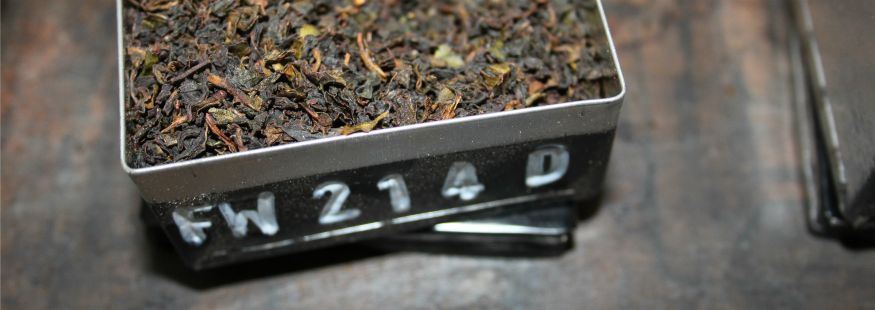Talking of Tea: Part Three

In this instalment of Talking of Tea we’re unscrambling the STGFOP riddle.
Similarly to coffee, there is no universal grading system applicable to tea. Grades will vary depending on the origin where the tea has been grown and processed. Broadly speaking, tea can be categorised into two groups – whole leaf and broken leaf. It is important to remember that grading is not an indication of quality; it is most often a representation of size and appearance only. The most commonly utilised grading system revolves around the classification of Pekoe, for which the letter P is the designation.
This grading system is as complex as it sounds. Pekoe (the subject of much controversy in its own right in regards to pronunciation – \pee-koh\ or \pek-ho\) designates a whole leaf tea. If a tea is graded with a P, it has typically been manufactured using the orthodox method of processing. The Pekoe system is used to classify tea from India and Sri Lanka and almost always black tea.
P is the basis for the Pekoe grading system and other grades are added to classify larger or smaller leaf size or indicate certain visual characteristics.
Some commonly used whole leaf grades are:
OP – Orange Pekoe
FOP – Flowery Orange Pekoe
GFOP – Golden Flowery Orange Pekoe
TGFOP – Tippy Golden Flowery Orange Pekoe
STGFOP – Special Tippy Golden Flowery Orange Pekoe
As the number of letters to the left of the P increases - generally speaking for whole leaf teas - so too does the size and characteristics of the leaf. An O before the P stands for the word “Orange”. An Orange Pekoe will denote a slightly larger and thinner leaf. A common misconception of an OP is that it will either taste like oranges or appear orange in colour. If you’ve read this far you will now know that neither of these are the case! The next grade is F, which stands for “Flowery”, signifying a tea with an abundance of unopened buds. From here we move to G for “Golden”, which means a certain number of leaves will adorn a yellow tip. A tea with a plenty of yellow tips is called a TGFOP – Tippy Golden Flowery Orange Pekoe. And the final grade in the STGFOP riddle is S, for the rather arbitrary “Special”, denoting the highest grade of whole leaf tea.
For broken leaf grades the above system applies, however the letter B, for "Broken", is added to the grade, for example BP, BOP, FBOP, GFBOP etc. And for smaller grades used in teabags, fannings – F and dust – D grades are used.
While grades do not necessarily designate quality, they do provide information that can be helpful when choosing a tea to fit a certain profile. A broken leaf will produce a more coloury liquor than whole leaf. So if you are looking for a black tea to be used in a breakfast blend, a broken tea - with a B in the grade - will be more appropriate. Alternatively if you are looking for a mellow and delicate black tea, a whole leaf tea with a high proportion of buds would be more suitable. So an FOP or GFOP will be the ideal choice.
It is important to have an understanding of how the Pekoe system works, however tea grades are usually designated by producers so they can often differ from one to another and are not always objective. According to the aficionados an easy way to remember the basics is to memorise the expression ‘simply too good for ordinary people’ - STGFOP!
Next instalment we will take a look at the grading systems used for oolong and green tea.


